Advancements in technology are constantly changing our world. This is no secret.
As a marketer, you need to have a better understanding of this technology that goes far beyond the latest smartphone release. If you recall, artificial intelligence made my list of the top marketing trends to look for in 2018.
While artificial intelligence and machine learning are often used interchangeably, they are not the same.
Basically, artificial intelligence has a broader meaning. It’s the idea that machines and computers can complete tasks normally requiring human intelligence.
Machine learning is a branch of AI, and it automates model building for data analysis.
The concept behind machine learning is that a computer can learn from the data it analyzes by identifying patterns. Ultimately, this technology can make decisions without humans.
What does this mean for marketers?
I know some of you might be thinking you’re not currently using this technology, so the information isn’t relevant to you. That couldn’t be farther from the truth.
The reality is, marketers are already using this technology to help improve their marketing campaigns and increase revenue by optimizing the customer experience.
If you don’t have your finger on the pulse, you could fall behind your competitors. Even if you’re not ready to implement machine learning today, you should be prepared to do so in the future.
I’ll explain the top 10 ways machine learning is reshaping marketing.
1. Improved lead scoring accuracy
Lead scoring helps rank prospective customers on a scale representing their value to your company. Improving your lead scoring accuracy will help you prioritize your lead generation strategies.
Right now, marketing professionals don’t have the highest confidence levels in their lead scoring methods:
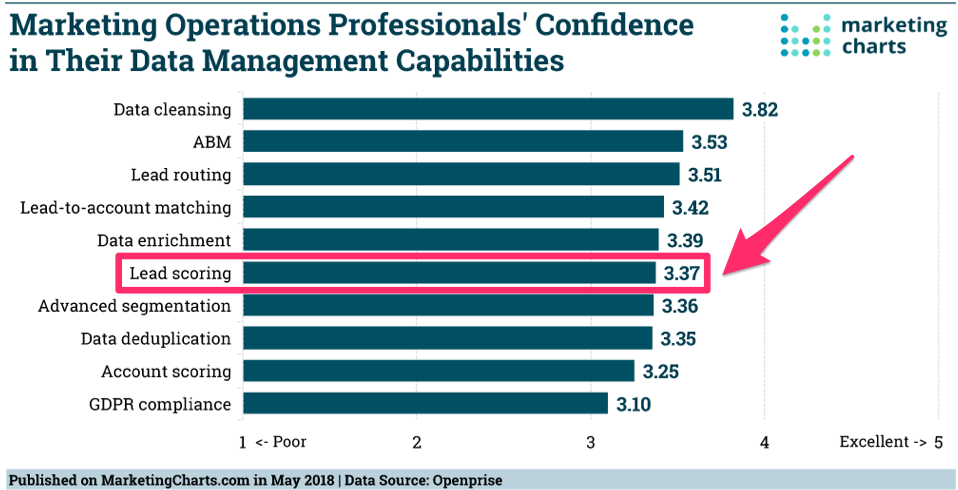
But as they embrace machine learning, I believe their confidence levels will increase.
That’s because many factors go into these calculations, and machine learning can help you make them.
Marketers use machine learning to monitor customer behavior. They write algorithms to track:
- websites visited
- emails opened
- downloads
- clicks
A consumer’s social score is a factor as well. It monitors and analyzes how a user behaves on social networks, e.g.:
- accounts they follow
- posts they like
- ads they engage with
Using machine learning to qualify prospects is helping businesses create more accurate customer profiles, improving their marketing.
2. Easier to predict customer churn
Customer churn is also known as customer turnover. It measures the number of customers who ended their relationship with a business.
For a SaaS business, it occurs when a customer cancels its service or unsubscribes from its membership.
Churn rates are calculated by the percentage of customers or subscribers who leave a business within a specified period of time. For a company to grow, the number of new customers must be higher than the churn rate.
You need to know what your churn rate is to know how satisfied your customers are with your product or service. And you also need to be able to predict your churn rate so you can minimize it.
How can you predict the churn? You need to monitor customer behavior.
Here’s a machine learning discovery model that can make predictions based on certain behaviors:
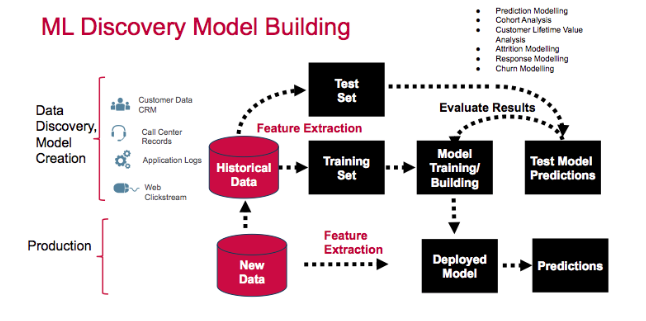
Examples of behaviors that get monitored include how customers engage with a product or mobile app.
When was the last time they signed into their profile? When was their last purchase?
For example, let’s say one customer visits your website twice per month. On the first visit, they research products, and on the second visit, they buy something.
This pattern goes on for a year. But after a year, the customer visits your site only once per month and doesn’t buy anything. You could predict they’ll stop using your business altogether soon.
Machine learning helps analyze this data on a much larger scale.
The technology gives marketers information to predict the churn so that it can be prevented. Now these brands can do something to make sure they don’t lose the customer before it’s too late.
3. Profitable dynamic pricing models
A dynamic pricing strategy allows businesses to offer flexible prices for the products and services they offer.
It’s a common model in hospitality, travel, and entertainment industries. With machine learning and AI, the dynamic pricing strategy is penetrating the retail industry as well.
Basically, this strategy helps you segment prices based on customer choices.
Dynamic pricing is also related to real-time pricing, which is when the value of goods is based on certain market conditions.
Purchasing an airline ticket is a great example of this. The price of the ticket depends on how far in advance you purchase it, the number of tickets already purchased, and the location of the seat.
This isn’t a new pricing strategy. But machine learning makes it easier for companies to implement and improve their dynamic pricing models.
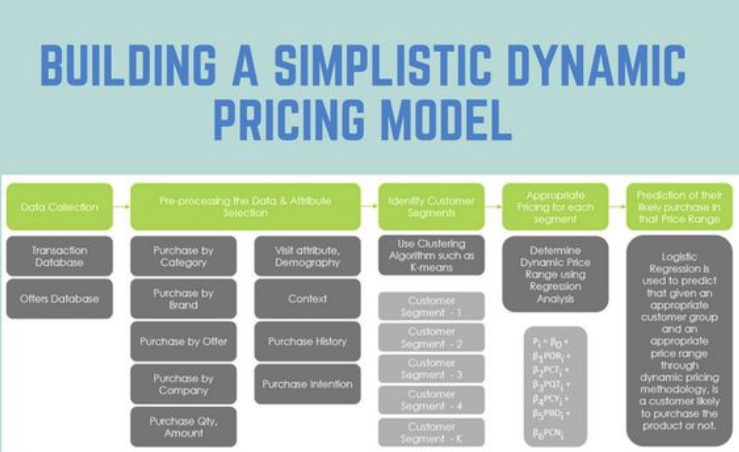
Setting the right prices is critical to the success of your business. You can generate more profits by focusing on your pricing strategy.
Machine learning helps you use regression techniques to make market predictions.
It’s also used for sales forecasting to optimize the pricing structure based on market spending habits.
4. Sentiment analysis
When you’re having a conversation with someone face-to-face, it’s easy to understand how they’re feeling.
You can make judgments based on their facial expression, tone, and body language.
This helps you determine if their satisfied, excited, or unhappy. But this can sometimes be lost with digital communication—the current trend.
We’re not having as many face-to-face interactions with consumers because they’re reaching us online.
When a customer sends you an email or direct message, you need to know how they’re feeling in order to properly respond. Machine learning can do this for you.
AI technology can analyze text to determine whether the sentiment there is positive or negative.
Sentiment analysis is being used by marketers to better understand their online reputation.
Computers read through social media comments and alert the marketers to negative content. The company can then address the problem raised.
AI can also identify people happy with your products to help you find social influencers and brand ambassadors.
You can use machine learning to help you read the emotions of consumers online.
5. Improve website experiments
Are you currently running tests on your website? A/B testing is a great way to improve the features of your site, mobile app, and email marketing content.
I’m a big advocate of using this strategy.
While A/B tests ultimately give you results to optimize your website, there is some downside to this method.
Yes, the end results of your testing will help you maximize conversions in the future. However, to get there, you miss some opportunities.
Let me illustrate. Let’s say you’re testing the CTA button on a landing page. By design, you’ll send 50% of your site traffic to a page generating fewer conversions than the other.
That’s how you test your hypothesis.
But what about the missed opportunity to convert those directed to the underperforming page?
Machine learning will help you solve this problem by improving your bandit testing.
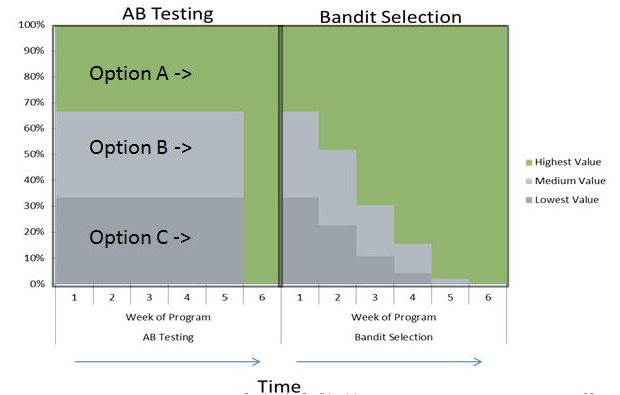
With bandit testing, the solution with the highest value gets prioritized.
The algorithms of such tests will minimize missed opportunities and make your experiments more profitable.
6. Prioritize ad targeting and customer personalization
AI and machine learning are helping marketers target their ads more effectively.
Right now, your ads might be great, but they can’t be effective if they aren’t being seen by the right audiences. With the help of AI, you can make sure your target audience is reached.
In addition to improving the way your ads get targeted, machine learning can help personalize the customer experience on your platforms.
Algorithms can predict which type of content would be the most popular with each unique visitor. You and I could both visit the same website and see different content:
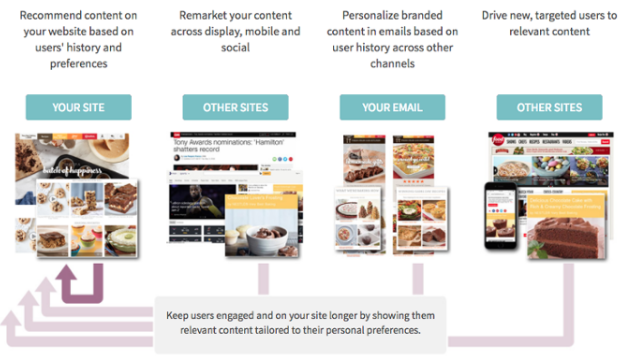
Let me give you an example. Delta Faucet used AI and machine learning to improve its website.
A case study was conducted on this technology and the new strategy.
After implementing machine learning, Delta Faucet saw a 49% increase in page views per visitor. Further, 45% of the traffic that came from paid ads resulted in visitors spending at least 40 seconds reading the content.
The clicks on the CTA buttons quadrupled.
And 37% of the visitors viewed multiple pages in a single session.
Machine learning made it possible to run personalized and targeted ads that led to higher visitor engagement.
7. Computer vision for product recognition
You might not be familiar with this technology. However, it’s increasing in popularity, and marketers are using it to their advantage.
Machine learning for computer vision helps brands recognize their products in images and videos online. Software such as GumGum can accomplish this.
Miller Lite used machine learning technology to scan through user-generated content on social media.
The algorithm looked for images without any relevant text to find posts related to the brand. It also tracked information about competing brands and influencers.
The software collected data about users who posted on social media about Miller Lite. These were the results:
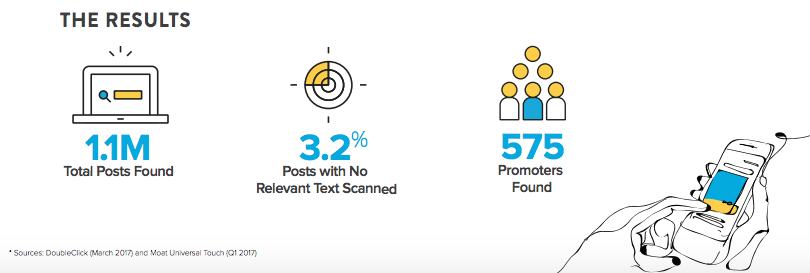
As you can see, machine learning helped this company find over 1 million posts associated with the brand.
It would be nearly impossible for a human to complete this task.
8. Relevant recommendation systems
Recommendations can go a long way.
If a friend or family member tells you about a restaurant you’d like or a book you’d enjoy reading, chances are, you’d actually like it.
That’s because these people know you. They won’t recommend a sushi restaurant to you if they know you have a seafood allergy.
They won’t recommend a historical non-fiction book to you if you’re a fan of science fiction novels.
Machine learning can identify your preferences as well and probably even better than the people who know you best.
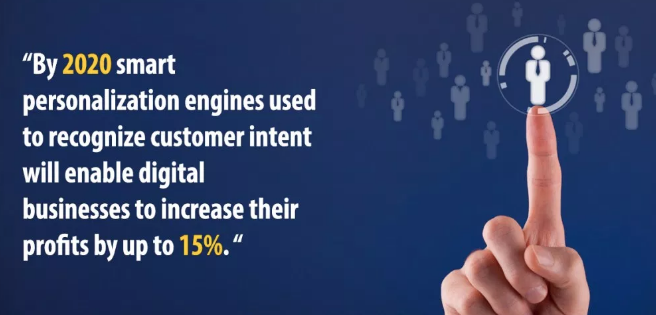
Here’s an example to show you what I mean.
If you have multiple profiles on your Netflix account, you know that each time you launch the platform, it asks you “who is watching?”
Then it has “recommendations for you,” based on shows, movies, and documentaries you have already watched.
These recommendations improve the customer experience. The same concept can be applied to your marketing efforts.
Machine learning helps marketers discover which types of products consumers want based on their browsing histories and shopping behaviors. Relevant product suggestions increase conversions.
9. Chatbots
Live chat has a 92% customer satisfaction rating. Studies show 63% of customers are more likely to return to a website if it offers a live chat feature.
You can learn how to provide better customer service by implementing live chat.
These are the top reasons why consumers prefer live chat:
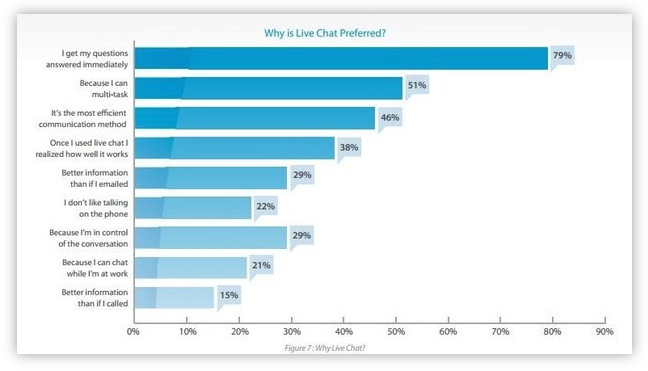
Chatbots can help you improve your live chat features.
That’s because they use some of the machine learning elements I’ve previously talked about.
Machine learning improves how chatbots operate by using sentiment analysis to judge the mood of a message from a customer. When paired with social media, machine learning can gather more information about customers when it receives a new message.
As a result, this will improve your targeting and product recommendations. Basically, machine learning helps chatbots further personalize the customer experience.
Chatbots keep your customers on pages for longer and also decrease the wait times for customers waiting to connect with customer service representatives.
10. Improved audience insights
I see business owners make the mistake of grouping their customers into one category all the time.
Just because all these people buy from your brand doesn’t mean they are the same.
You need to segment your customers into groups. This can help improve engagement when you target them.
Software that uses machine learning, like Affinio, can help you with this.
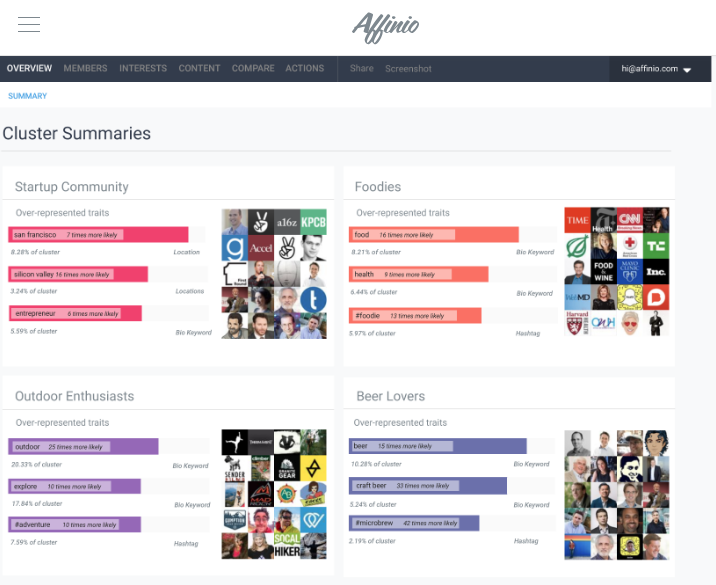
With machine learning, you can learn valuable information about your customers.
This information will give you more accurate data to use when you’re building a customer persona to help you improve personalization and target people accordingly.
Affinio helps you discover various aspects of your customers’ behaviors, e.g., how many of your customers are foodies, how many watch a certain TV show, and which customers have traveled to similar places.
Now you can segment these customers into different clusters to improve their experience and increase the likelihood of them converting.
Conclusion
Artificial intelligence is here, and it’s not going anywhere.
Marketers are already using machine learning technology to change the way they operate.
Even if your company isn’t ready to implement this methodology today, you need to keep up to date with the latest trends. Otherwise, you could fall behind your competitors.
If you know how to use it to your advantage, machine learning can be a valuable tool for your business.
When you’re ready to move forward with this technology, refer to this list to help you determine the best ways to improve your marketing strategy.
How is your company planning to use AI and machine learning to optimize your marketing efforts?
source https://www.quicksprout.com/2018/09/24/10-ways-machine-learning-is-reshaping-marketing/
source https://derekpackard.com/10-ways-machine-learning-is-reshaping-marketing/

No comments:
Post a Comment